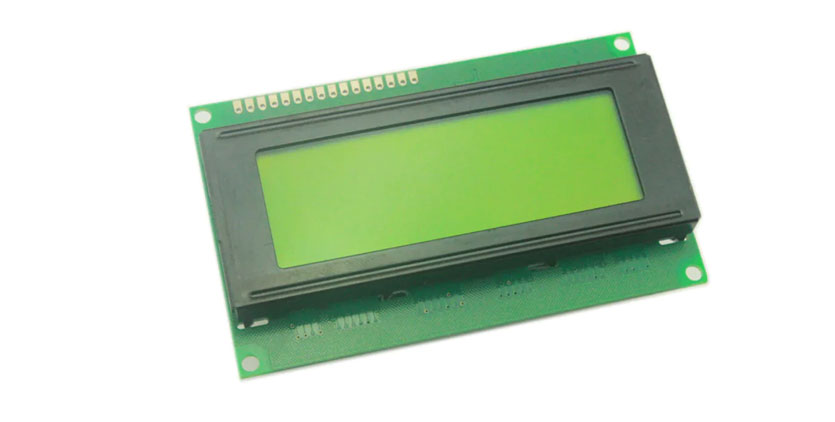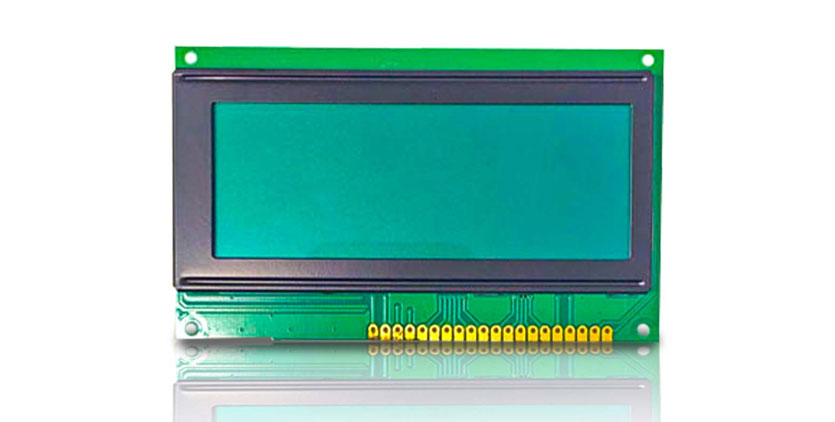Decoding Alphanumeric LCD Display Modules – An Introduction
Alphanumeric LCD display modules are at the forefront of visual communication technology, revolutionizing how information is presented. In this section, we unravel the basics, providing a comprehensive introduction to these displays and shedding light on their unique characteristics.
How Alphanumeric LCDs Differ from Other Displays
Alphanumeric LCDs go beyond conventional displays by combining letters, numbers, and symbols on a single screen. Unlike generic displays, they are specifically designed for conveying textual information, making them ideal for applications requiring clear, readable text.
Understanding the Importance of Alphanumeric Displays
Clear communication is paramount in various industries. Alphanumeric LCDs excel in delivering information with precision, enhancing readability in diverse environments. Whether used in industrial settings, consumer electronics, or medical devices, these displays ensure messages are conveyed accurately.
Why Choose Alphanumeric LCDs?
The versatility of alphanumeric LCDs lies in their ability to adapt to different applications. From displaying critical data in industrial control panels to providing user-friendly interfaces in consumer gadgets, these displays offer a balance of functionality and versatility.
Types of Alphanumeric LCD Display Technologies
Alphanumeric LCD display technologies come in various configurations, each offering unique advantages. Two prominent types are Alphanumeric LCD Display Module Chip on Board (COB) and Alphanumeric LCD Display Module Chip on Glass (COG).
- Alphanumeric LCD Display Module Chip on Board (COB): In the COB configuration, the LCD chip is directly mounted on the circuit board, streamlining the manufacturing process and reducing the overall size of the display module.
Advantages:
- Compact Design: COB modules are known for their space-efficient design, making them suitable for applications with limited space.
- Cost-Effective Production: Directly mounting the LCD chip simplifies the manufacturing process, resulting in cost savings.
- Durability: With fewer components and connections, COB modules tend to be more robust and less prone to damage.
- Alphanumeric LCD Display Module Chip on Glass (COG): In the COG configuration, the LCD chip is mounted directly onto a glass substrate, offering enhanced visual clarity and allowing for more intricate designs.
Advantages:
- Enhanced Visuals: COG modules often provide superior visual clarity and sharpness due to the direct attachment of the LCD chip to glass, reducing interference.
- Design Flexibility: The glass substrate allows for more creative and customizable designs, making COG modules suitable for applications where aesthetics are crucial.
- Reduced Power Consumption: COG displays can be optimized for energy efficiency, contributing to longer battery life in battery-powered devices.
Understanding the distinctions between COB and COG Alphanumeric LCD display technologies allows for informed decisions when selecting the most suitable technology for specific applications.
Key Features to Look for When Buying Alphanumeric LCD Display Modules
When venturing into the realm of alphanumeric LCD display modules, it’s crucial to consider key features that define their performance and suitability for specific applications. Here are the essential factors to look for when making a purchase:
- Crisp Readability Matters: Evaluating Display Resolution and Contrast
- Resolution: Opt for a display with a higher resolution for sharper and clearer text. Higher resolution ensures that alphanumeric characters are rendered with precision, enhancing overall readability.
- Contrast Ratio: A high contrast ratio contributes to better differentiation between characters and the background. This is especially vital in environments with varying light conditions, ensuring information remains legible.
- Backlight Brilliance: Enhancing Visibility in Various Environments
- Adjustable Backlight: Look for displays with adjustable backlight settings to accommodate different lighting conditions. This feature is crucial for ensuring optimal visibility in both bright and low-light environments.
- Uniform Illumination: A uniform backlight ensures consistent brightness across the entire display, preventing uneven lighting that can impact readability.
- Size Considerations: Choosing the Right Dimensions for Your Application
- Screen Size: Consider the intended use and available space. Larger screens may be suitable for applications requiring more extensive information display, while smaller screens are ideal for space-constrained environments.
- Aspect Ratio: Choose an aspect ratio that complements the type of content you’ll be displaying. Some applications may benefit from widescreen formats, while others may require a more traditional aspect ratio.
Navigating through these considerations ensures that the chosen alphanumeric LCD display aligns seamlessly with the specific requirements of your project.
Alphanumeric LCD Display Applications – From Industrial to Consumer Electronics
Alphanumeric LCD displays, with their ability to convey textual information with precision, find versatile applications across a spectrum of industries, ranging from industrial settings to consumer electronics. Here’s a closer look at how these displays play a crucial role in various domains:
- Enhancing Human-Machine Interaction in Industrial Environments:
- Control Panels: Alphanumeric LCD displays are integral components of control panels in industrial machinery. They provide real-time data, status updates, and alerts, facilitating efficient monitoring and control.
- Process Monitoring: In manufacturing processes, these displays offer a clear presentation of crucial parameters, ensuring operators can monitor and adjust processes with accuracy.
- Alphanumeric Displays in Consumer Electronics: Aesthetic and Functional Appeal:
- Smartphones and Tablets: Alphanumeric LCDs contribute to the sleek displays of smartphones and tablets, presenting text messages, notifications, and other information with clarity.
- Home Appliances: From digital clocks to microwave ovens, alphanumeric displays provide users with clear information about settings, time, and operational status.
- Medical and Automotive Applications: Precision and Reliability:
- Medical Devices: Alphanumeric LCDs are employed in medical equipment such as infusion pumps and patient monitoring systems, delivering critical information accurately to healthcare professionals.
- Automotive Displays: In vehicles, these displays serve in instrument clusters, providing drivers with essential information like speed, fuel levels, and navigation prompts.
Alphanumeric LCD displays bridge the gap between users and technology, offering a reliable means of presenting information across a diverse array of applications.
Elevate Your Display Experience with Royal Display’s Custom Introduction to Alphanumeric LCD Display Module
When it comes to custom LCD Display Module, Royal Display stands as a distinguished manufacturer with a rich history of serving display modules across diverse markets. Our extensive experience in market and product development underscores the commitment to delivering tailored solutions that meet the unique needs of our clients. With Royal Display, you’re not just investing in a product; you’re partnering with a trusted industry leader dedicated to innovation, quality, and customer satisfaction. Elevate your display experience with Royal Display’s exceptional range of LCD Display Module. Contact Us Today!





